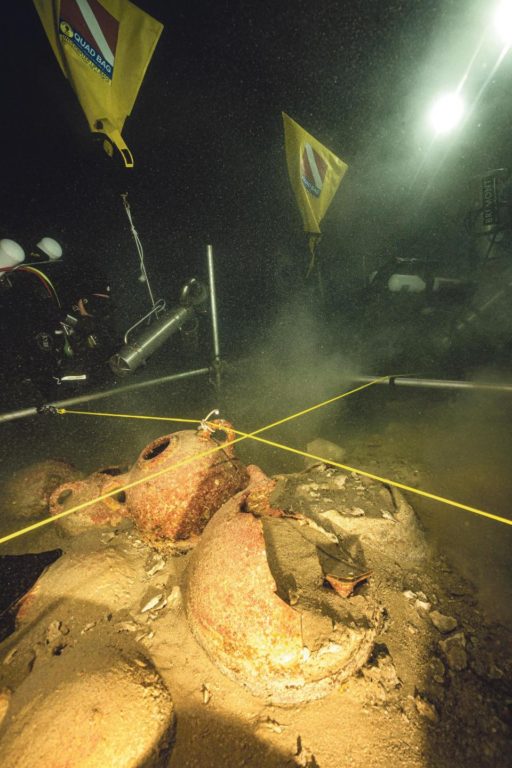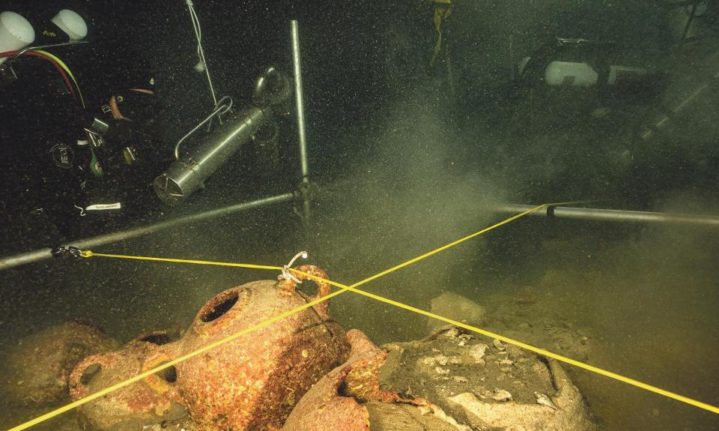Parts of the hull of a Phoenician shipwreck off Gozo, an island of Malta, has recently been discovered after an estimated three thousand years underwater.
A team of divers exploring and charting the wreck observed certain elements of the ship’s timber for the first time during this year’s excavation season which has just come to an end. The wreck was first discovered 12 years ago and is believed to be the oldest in the central Mediterranean.
The find, about two kilometres off the coast of Gozo, could shed light on commercial relations between the Phoenicians, ancient Greeks and other cultures in the central Mediterranean. This is according to marine archaeologist Prof Timmy Gambin from the University of Malta, co-director of the project surveying the site.
‘We’re used to reading about the tension between the Greeks and the Phoenicians and I think further studies on this shipwreck may shed light on better trade relations than what we currently hypothesise about,’ he told Times of Malta.
A technical team is currently putting together 8,000 photographs to create a high-resolution 3D model of the area with information from sample material that divers extracted from the site.
Also read: Site of South Africa’s most significant shipwreck uncovered
Gambin expressed confidence that excavations could reveal remains of the wooden vessel, buried two metres beneath the seabed surface. Besides the wooden vessel itself, archaeological remains beneath the seabed include a secondary cargo of smaller objects, such as ceramic jugs. A rare Phoenician bowl and a previously unknown type of urn have been recovered from the lower levels of the ship’s cargo.
The seven different types of visible amphorae on site, which probably originate from Western Italy, Sicily and, possibly, Sardinia, might indicate the route of the ship.
The amphorae might have been carrying wine and some could have been traded for funeral rites. Some 20 blocks of stones made of volcanic rock – probably used to grind wheat and weighing over 1.5 tons – show the extent the traders would go to do business.

Divers at the underwater site.
‘Many people think a shipwreck is a time capsule but the preservation of the vessel’s wood depends on how the site was formed. There are biological factors like sea worms that eat at the wood and oceanographic processes where sea plants carried by currents accumulate around the site,’ he added. ‘Comparing the information from the site with that of similar shipwreck discoveries where wood remains were in good condition, we are 99 per cent sure there are more wooden remains under the seabed.’
The Gozo shipwreck is unique because it dates back to 700BC and archaeologists know hardly anything about ships built in that period.
The survey of the shipwreck is being carried out within the Groplan Project funded by the French National Research Agency and is aimed at developing underwater photogrammetry, a 3D recording system for scientists.
The results are also internationally significant for archaeologists interested in archaic trade and technology but also for those developing underwater robotics.
‘While the vast majority of shipwrecks discovered so far are in waters 60 metres deep or shallower, this is in waters 120 metres deep, so the project will answer questions on how technology could replace human intervention and, at the same time, test the limits of human efficiency,” Gambin said. The wreck dates back to 7th Century BC according to this article, making the team – a collaboration of local and international experts and divers – the first and only one to excavate at this depth anywhere in the world.
The technology used in the project could, for example, be developed for pipeline surveys and underwater structures like breakwaters that are out of reach of human beings.
‘Good progress was made throughout three weeks in September and this unique project continues to yield results,’ he adds.
Heritage Malta, in collaboration with the University of Malta, has set up an exhibition showcasing the ongoing results of recent fieldwork including a specially commissioned 3D model of the shipwreck that was recently on show at Science in the City.
The international Phoenician Shipwreck Project is also supported by the Ministry for Gozo, the Malta Tourism Authority, the Malta International Airport and the Honor Frost Foundation.
Pictures: Times of Malta
















